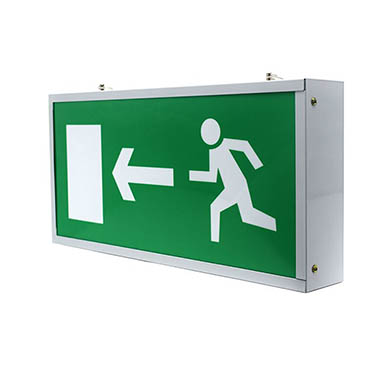LED emergency lighting is typically used in emergencies where the main power is disconnected and all normal lighting has failed. This may be caused by a power outage or fire, and LED emergency lighting must automatically be fully operational and provide sufficient light to allow all occupants to safely leave the premises.
If You Are Considering an Led Emergency Lighting System, You Should Be Aware of the Following Information.
Today, most buildings have sophisticated LED emergency lighting installations installed during construction; the architects choose the equipment design based on current local authority requirements and building codes. Emergency LED lighting is often subdivided into backup lighting and emergency escape lighting.

Often, the decision to use a stand-alone LED emergency lighting system or a central battery may depend on cost. If the installation is durable and has low maintenance requirements, then a central battery, while quite expensive, may be ideal for larger projects. Often, cost and fixtures are the main concerns, especially on smaller jobs, and it is this criterion that makes stand-alone systems more popular.
Emergency escape lighting is the part of an emergency lighting system that provides illumination for the safety of people evacuating a location or attempting to end a potentially hazardous process early.
The first step in installing LED Emergency Lighting escape lighting is consultation and design. The fire risk assessor and designer should meet and make a thorough decision on where the system is needed and develop a plan indicating the type of power supply, location to be covered, amenities, duration and mode of operation.
Once you have decided on the type of LED emergency lighting system you want to install, proceed to select specific locations for illuminated signs and units within a given site. This will help you select the right unit. Remember, emergency LED lighting signs should be carefully placed to create clear exit routes to the final exit of the building. If an exit cannot be identified, visible signs should be used instead of illuminated units. Special attention should be paid to directional changes, individual stairways, floor changes, corridor intersections, mechanical rooms and toilet areas. Access to fire apparatus and fire alarm call stations should be properly illuminated.
If you would like more information about emergency equipment, please contact us for professional answers.

 Ni-MH Battery C4700mAh 3.6V
Ni-MH Battery C4700mAh 3.6V Nickel Cadmium Nicd Battery Pack SC1800mAh 3.6V
Nickel Cadmium Nicd Battery Pack SC1800mAh 3.6V Ni-Cd Battery Pack D4000mAh 3.6V
Ni-Cd Battery Pack D4000mAh 3.6V Ni-Cd Battery Pack C2500mAh 3.6V
Ni-Cd Battery Pack C2500mAh 3.6V NICAD Battery Pack AA900mAh 3.6V
NICAD Battery Pack AA900mAh 3.6V LiFePO4 IFR18650 1600mAh 3.2V
LiFePO4 IFR18650 1600mAh 3.2V LiFePO4 IFR18650 1600mAh 6.4V
LiFePO4 IFR18650 1600mAh 6.4V Ni-MH Battery C4000mAh 3.6V
Ni-MH Battery C4000mAh 3.6V E-bike Battery 48V 10Ah JL-1
E-bike Battery 48V 10Ah JL-1 E-bike battery 48V 10Ah Qing Tian
E-bike battery 48V 10Ah Qing Tian